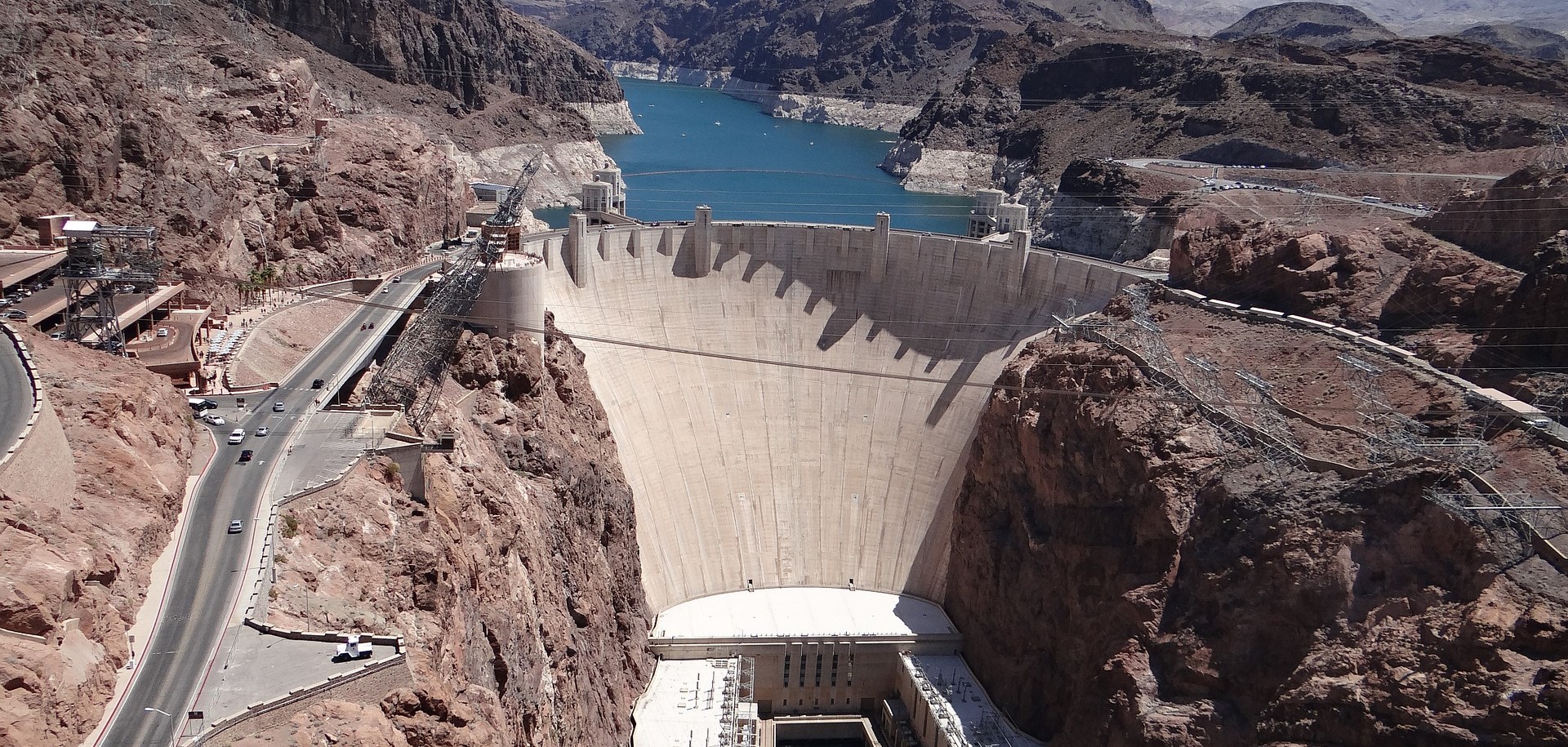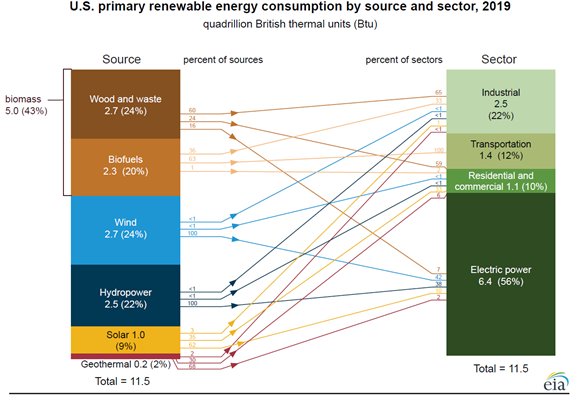6 “Non-Power” Benefits of Hydropower Energy
According to the latest data available, renewable energy consumption in the United States is only 11% of total U.S. consumption. However, more notable is that the United States’ renewable energy consumption grew for the fourth year in a row, reaching a record 11.5 quadrillion British thermal units (Btu). The chart published in the Monthly Energy Review from the U.S. Energy Information Administration (EIA) shows how much renewable energy by source is consumed per each sector.
This breaks down as follows:
Wood and Waste ( Biomass ) – 24%
Biofuels ( Biomass ) – 20%
Wind Energy – 24%
Hydropower Energy – 22%
Solar Energy – 9%
Geothermal Energy – 2%
Today’s blog post will dive into one of the most economical renewable sources – Hydropower Energy, the utilization of water power derived from the energy of falling or fast-running water, harnessed for useful purposes.
We generally think of Hydropower as electricity generation and a source for energy storage, which is an obvious assumption. Still, these facilities also provide several other benefits that are not related to power, specifically.
Here are the six “non-power” benefits of Hydropower:
1. Food Security – Hydropower is a reliable source of water for irrigation, supporting food production activities.
2. Water Quality, Quantity, and Timing – Hydropower offers an opportunity to improve water quality through targeted releases to deliver enhanced environmental flows with measured control for maximum water purity.
3. Jobs – The Hydropower Industry will need thousands of new workers over the next decade, offering many high-wage jobs across the country.
4. Flood Protection – Since excess water can be stored and released when power is needed, Hydropower helps avoid a potential disaster while creating a net benefit for energy storage.
5. Recreation and Tourism. Many of the most extensive hydropower facilities in the U.S. are quite attractive to tourists. For example, the Hoover Dam, crossing the Arizona-Nevada, is the most-visited dam globally, with nearly 7 million tourists visiting each year.
6. Savings for Consumers – Globally, Hydropower remains the cheapest form of electricity, which is why some of the U.S. states with a high percentage of hydropower generation (Washington, Oregon, or Idaho enjoy the lowest electricity rates in the U.S.
What’s most important, as we look to the future, by 2050, Hydropower Energy can reduce cumulative greenhouse gas emissions by 5.6 gigatonnes, equivalent to nearly 1.2 billion passenger vehicles driven in a year, saving $209 billion from avoided global damages from climate change.
Source:
Simmons, D. (2020, December 10) – Six Non-Power Benefits of Hydropower
At IMMIX Productions, we have encountered a notable trend during the past several years, specifically the increasing demand for incorporating animations into video productions, process-visualizations, and product marketing infomercials. In our future posts, we will explore some of the more significant developments in the energy industry, new inventions, unique processes, and emerging technologies. We will discuss their benefits, challenges, and solutions.
About:
IMMIX Productions is a Creative Development Supplier to the Oil, Gas, Energy, Renewables, and related Industries for 18+ years. Our specialties are 3D Animation, Visual Simulations, 2D/3D Modeling, and Virtual/Augmented Reality Solutions. Please check out our 3D Animation Reel or visit the IMMIX site for energy-related animation samples, case studies, and success stories.

